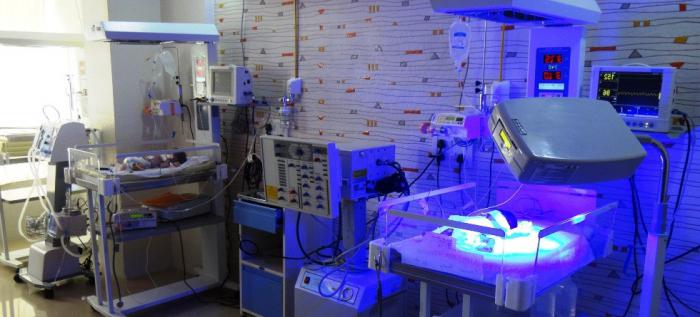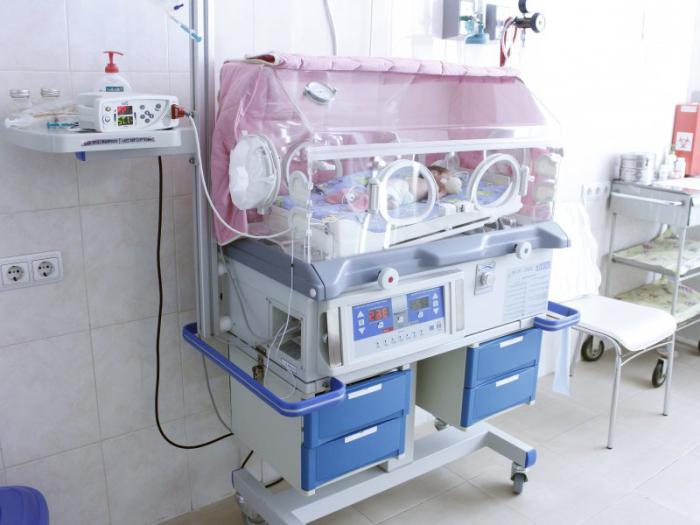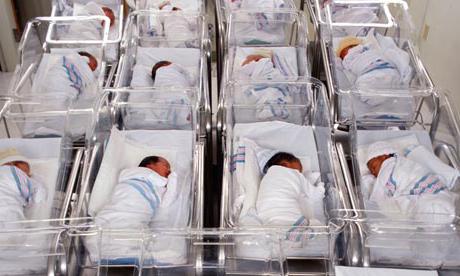One of the most important events in the life of any of us is the birth of a little native man. But this action is fraught with a number of great difficulties and experiences. Pregnancy, of course, is not a disease, but is accompanied by constant discomfort caused by various reasons, and even painful conditions. And any mommy wants the long-awaited event not to be overshadowed by any moral torment or health problems. Future parents pay special attention to the safety of the medical institution for both the mother and the child, as well as being equipped with the necessary equipment and qualifications of specialists, carefully studying the reviews about the maternity hospitals in order to choose the most suitable one.
Institution Profile
The maternity hospital 17 of the city of Moscow, which began operations on December 23, 1993, is a medical institution specializing in the profile of “Preterm delivery”. Within its walls, they can carry out a wide variety of obstetric and gynecological interventions, including the use of assisted reproductive technologies (in vitro fertilization method) and provide pediatric care of any complexity, as it is equipped with the entire range of necessary equipment and staffed with highly skilled experienced specialists.
Already in 2004, the maternity hospital took the direction of assisting in premature birth. Blocks designed for resuscitation of newborns and intensive care in the postpartum period were expanded and equipped with all high-tech equipment. All this, as well as the high level of training of resuscitation doctors makes it possible to nursing children weighing less than 1000 g, born on a period from 22 to 28 weeks. The survival rate of such babies in the walls of this institution reaches 77-80%, and the smallest of the saved newborns weighed 560 grams. According to these criteria, the rating of maternity hospitals of the capital puts this institution in the top ten.
Its walls were also sheltered by the Department of Obstetrics and Gynecology of the Moscow Medical Academy. I.M.Sechenova and the Department of Children's Diseases No. 1 of the pediatric faculty of the Russian State Medical University, for which the hospital is a clinical base.
Location and contact information
Maternity hospital 17 is located in the Northern administrative district of Moscow, on the 800th anniversary of Moscow, at number 22. If you get to it by public transport, it will be more convenient to get to the Petrovsko-Razumovskaya metro station - the closest to this medical institution, and from take bus number 677 or number 149 to the stop "Supermarket".
Everyone who wants to visit the maternity hospital 17, the address, the procedure for receiving registration in the hospital, the necessary documents and other information of interest will be prompted by calling the information desk - (499) 906-01-48, and the reception department - (499) 906-01-46. This information can also be obtained on the official website of the hospital.
Institution structure
Representing a full-fledged perinatal center, the maternity hospital includes the following departments: gynecological, pregnancy pathologies, maternity, postpartum, observational, module for newborns, resuscitation and intensive care of newborns, as well as prenatal diagnosis of the maternity hospital. In addition, there are three departments with citywide significance: in vitro fertilization, consultative diagnostic and the department of prenatal diagnosis with CTL.
An administrative unit has been equipped to service staff, patients and visitors, as well as its own pharmacy. Women's consultation at the 17th maternity hospital is provided by ZhK No. 8, which is its structural unit, although they are geographically separated, as the consultation is located on 135 Dmitrovskoye Shosse. The maternity hospital also serves ZhK No. 4 patients.
Within the walls of this medical institution, 171 beds are arranged for future patients in all departments, of which 40 are allocated for the department of pregnancy pathology, 100 beds are assigned to the maternity department, the gynecological department is designed for 25 people, and 6 beds are allocated for wards. resuscitation of newborns. In the department for newborns, there are 100 beds, of which 22 beds are given for observation wards and 8 to the department for premature babies.
The presence of a resuscitation department for newborns and a department of prenatal diagnosis is very important here, in which, at the very early stages of fetal development, specialists can detect the presence of any pathology, which will allow, if possible, even before birth to apply a number of measures to correct it. For the convenience and safety of small patients, a round-the-clock duty of a neonatologist and children's resuscitator is organized. In the same maternity unit, at any time of the day or night, three obstetricians and an anesthetist are ready to assist the woman in labor.
The device of the hospital
This perinatal center is located in a seven-story building erected according to an individual project, the development of which took into account all the features of the future medical institution, taking into account its specificity and the prevailing profile. All departments of the hospital are isolated from each other, but at the same time have a convenient message, which makes it easy to transfer patients from one to another. Many reviews about 17 maternity hospitals speak about comfortable conditions of stay here.
On the ground floor there is an emergency room in which incoming patients are registered. There are also check-out rooms, a gear table, as well as some utility rooms, such as a cloakroom for staff and a point of delivery of clean linen. In addition, there is a pharmacy, which allows patients or their relatives to purchase the necessary medicines without leaving the medical institution.
The second floor is intended mainly for the needs of the maternity hospital staff directly; offices of the administration of the institution, a conference room, a linen warehouse, a laboratory and other technical rooms are located here. Also on the territory of the second floor are the wards of the day hospital.
The third floor is occupied by the obstetric (observational) department. It is equipped with double boxes with individual showers and a bathroom, two maternity wards and a small operating room. On the third floor there is a full operational unit.
The fourth floor contains a maternity unit, consisting of 14 maternity units, divided into two compartments, in which they provide highly qualified assistance around the clock in the birth of newborns. A woman in labor spends time here from the moment she arrives or is transferred from another department until the end of the birth period, and a few more hours after it. During this time, the baby is measured and applied to the breast, the state of health of the mother and baby is monitored, postpartum damage to the soft tissues and other necessary manipulations are performed, after which the issue of transferring the newborn and his mother to the appropriate state of health is resolved. As part of the maternity unit, there is an anesthesiology and resuscitation unit, consisting of two operating rooms and one postoperative ward. At the request of the patient, during the process of the birth of the baby, the husband may be present, providing moral support to the woman in childbirth, which makes delivery in 17 maternity hospitals as comfortable as possible. The maternity hospital staff tries to organize the birth process as naturally as possible, without the use of unnecessary surgical intervention and drugs.
The postpartum unit is located on the 5th floor. It consists of double rooms, in which mothers and their children are together, and in the “Mother and Child” compartment, patients are located in single rooms equipped with an individual bathroom and shower. Similar conditions are offered to women in labor who have concluded a contract for a paid birth. Chambers for women were separated from the main unit after cesarean section or who had complications during childbirth, which requires closer monitoring by the medical staff.
The sixth floor was given to the gynecological department. There are rooms equipped for the operating room for examination and treatment rooms, as well as for ultrasound with its portable ultrasound machine. In this block, a variety of gynecological manipulations and operations are performed, including an abortion procedure at a short gestation period, manipulations are performed to prevent abortion, treat toxicosis, and others.
The seventh floor includes a department of pregnancy pathology, as well as physiotherapy and boxes for patients in need of prenatal diagnosis.
The two-story extension is designed for a full-fledged pharmacy, which has all the necessary facilities to create optimal storage conditions for any category of drugs, as well as containing a laboratory and a catering unit.
The list of services
Preparing for such an important event in her life as the birth of a long-awaited baby, any mother, if possible, seeks to choose the most suitable medical institution, studying the rating of maternity hospitals and specifying the volume of services provided. Like other institutions in the capital of the corresponding profile, this hospital provides its patients with obstetric and gynecological care in full through the compulsory medical insurance program absolutely free. These are any examinations, treatment and necessary diagnostic and surgical interventions prescribed by the doctor of the antenatal clinic. The list of services available for the compulsory medical insurance policy is limited, and if the patient wants to receive additional studies or medical procedures beyond those prescribed, then she needs to conclude a voluntary medical insurance contract.
The VHI policy significantly expands the range of available services, but the list of them is nevertheless clearly defined and includes one antenatal consultation at which the obstetrician-gynecologist draws up a plan for the upcoming birth, a number of standard tests and one-time services of the Skoroy brigade (up to 30 km outside Moscow ) at the beginning of the birth process. In a hospital for pregnant women who have entered into a contract for childbirth, the 17th maternity ward of the ward for conducting prenatal activities provides small ones, while the rest period takes place in an individual box. In childbirth, modern anesthesia-respiratory equipment or epidural anesthesia is used. After childbirth, the newborn and mother are placed in a separate room, while at the request of the woman in labor, the child can be with her or separately. All instruments used on paid births and after them are disposable, and research methods such as ultrasound and cardiomonitoring of the fetus are also available.

In addition to specialized, this institution provides services to overcome the problems of infertility. In particular, in vitro fertilization is carried out within its walls, for which there is all the necessary high-tech equipment and the appropriate staff qualifications.
A new service is free classes at the School for Childbirth, which was organized in September 2013. They are held weekly on Saturdays by appointment in the conference room.
Department of Pregnancy Pathology
The seventeenth maternity hospital invites women who have any problems in bearing a pregnancy to undergo an examination and appropriate treatment in the department of pregnancy pathology. Here, patients are closely monitored by narrow specialists - a therapist, an ophthalmologist, anesthetist, and others, which makes it possible to respond in a timely manner to the resulting problems and prescribe adequate treatment or apply surgical delivery. According to the testimony, drug preparation for the birth process is carried out. They are admitted to this department starting from 30 weeks of pregnancy, before this period, patients are sent to a gynecological department.
Maternity ward
With the onset of labor or in a planned manner, the expectant mother is sent to a medical institution to receive appropriate assistance. Here, newborns appear in the usual way or using a cesarean section, but since the institution is aimed at maintaining a natural birth, medical intervention is minimally applied, only for very strict indications, and this leads to the fact that the reviews of the 17 maternity hospitals do not always bear a positive color. At the request of the patient can obtain more acceptable conditions of stay by issuing a contract for paid birth, which will allow you to choose the desired obstetric care specialist, to be in a separate room in the next period, which has increased comfort. This institution has all the necessary modern equipment, patients use the services of the most highly qualified specialists.

The prenatal wards accommodate three patients. From a certain time, a woman in labor is transferred, and the baby is born in comfortable single birth boxes, in which the period of disclosure and the process of childbirth itself take place. At the same time, since the maternity hospital is positioned as physiological, the patient’s free behavior in childbirth is allowed. At her request, the presence of her husband is also possible. After the successful completion of the process, they traditionally take a photograph of the newborn as a keepsake. To comply with the principle of physiology, the baby immediately after birth is laid on the mother’s stomach, and after measurement and examination, even in the maternity ward, the baby is first applied to the breast so that it receives the colostrum drops most valuable for the development of immune defense. Under the contract, you can order a cord blood collection service to isolate stem cells.
Postpartum ward
During the postpartum period, mother and child are in wards for two beds. One of the medical institutions providing obstetric care is maternity hospital 17, whose staff traditionally tries to ensure the joint stay of the child with the mother, if there are no serious contraindications to this in the form of health problems in any of them. Kids are provided with separate special cots and individual changing tables. Shower and toilet is designed for two chambers. The refrigerator is in the common corridor. You can leave the transferred products in it, filling them out in accordance with the rules adopted by the department. For patients after cesarean section, a separate unit is equipped, where they are specially monitored. This allows you to notice in time the trouble and prevent possible complications, and also contributes to a faster adaptation process after abdominal surgery.
For patients who have drawn up a contract for a paid birth, there is a special “Mother and Child” compartment with individual rooms equipped with everything necessary for a comfortable stay, as well as a toilet and shower.
Features of the Observation Department
For safety issues, especially preventing the spread of infection, every maternity hospital is attentive. The perinatal center also has a separate block, which is a maternity hospital in miniature, designed to isolate pregnant women or patients after childbirth according to indications. Such can be considered the arrival of a pregnant woman with signs of any infection, elevated body temperature of unknown etiology, carriage of antibodies to hepatitis B and C viruses, the presence of an anhydrous period of more than 12 hours, the occurrence of postpartum purulent-septic diseases (endometritis, suppuration of perineal sutures, etc. )

If an infectious disease is detected in the pregnant women observed in the pathology department, they are also transferred to this block observation. During childbirth outside a specialized medical institution, the newborn and his mother are also identified in this module. In its structure there is a separate unit for childbirth, its own operating room and its own wards for newborns. The observational module is characterized by increased requirements for the sanitary regime in terms of cleaning and disinfection of premises, equipment and other things. In his conditions, the joint finding of a newborn with the mother is prohibited, since the presence of an infectious or purulent-septic postpartum complication in her is a fact of an increased risk of infection of the child. Questions on breastfeeding are decided individually in each case.
Patient Reviews
Any institution that provides services to the public evokes diametrically opposing opinions through its activities. This medical institution is no exception. Reviews about the 17 maternity hospital are quite heterogeneous, but everyone notes the really good equipment of all departments with medical equipment and other equipment.The entire institution is divided into small modules in which comfortable rooms are arranged, which is also noted by former patients as a positive moment. There is also a share of negativity, which is caused, like the existing negative reviews about maternity hospitals in other areas of the capital, mainly by the work of the staff. Someone complains about the lack of attention from obstetricians, someone did not have enough help with the baby in the postpartum period. But these factors are variable, as they are caused by many reasons that are not dependent on the person.
, , . :
- ;
- the presence of a clinical diagnostic laboratory that can carry out the full range of necessary studies, and an IVF department.
Therefore, despite a certain amount of negativity, the reviews of the 17 maternity hospital are mostly positive in color, which makes it possible to recommend it to expectant mothers for the birth of a baby. This institution is suitable primarily for those who are aimed at natural birth and breastfeeding. After all, here, medication and surgical intervention is used only in extreme cases, when appropriate indications arise. By equipment, this hospital can be attributed to the top ten institutions of the capital of a similar profile.